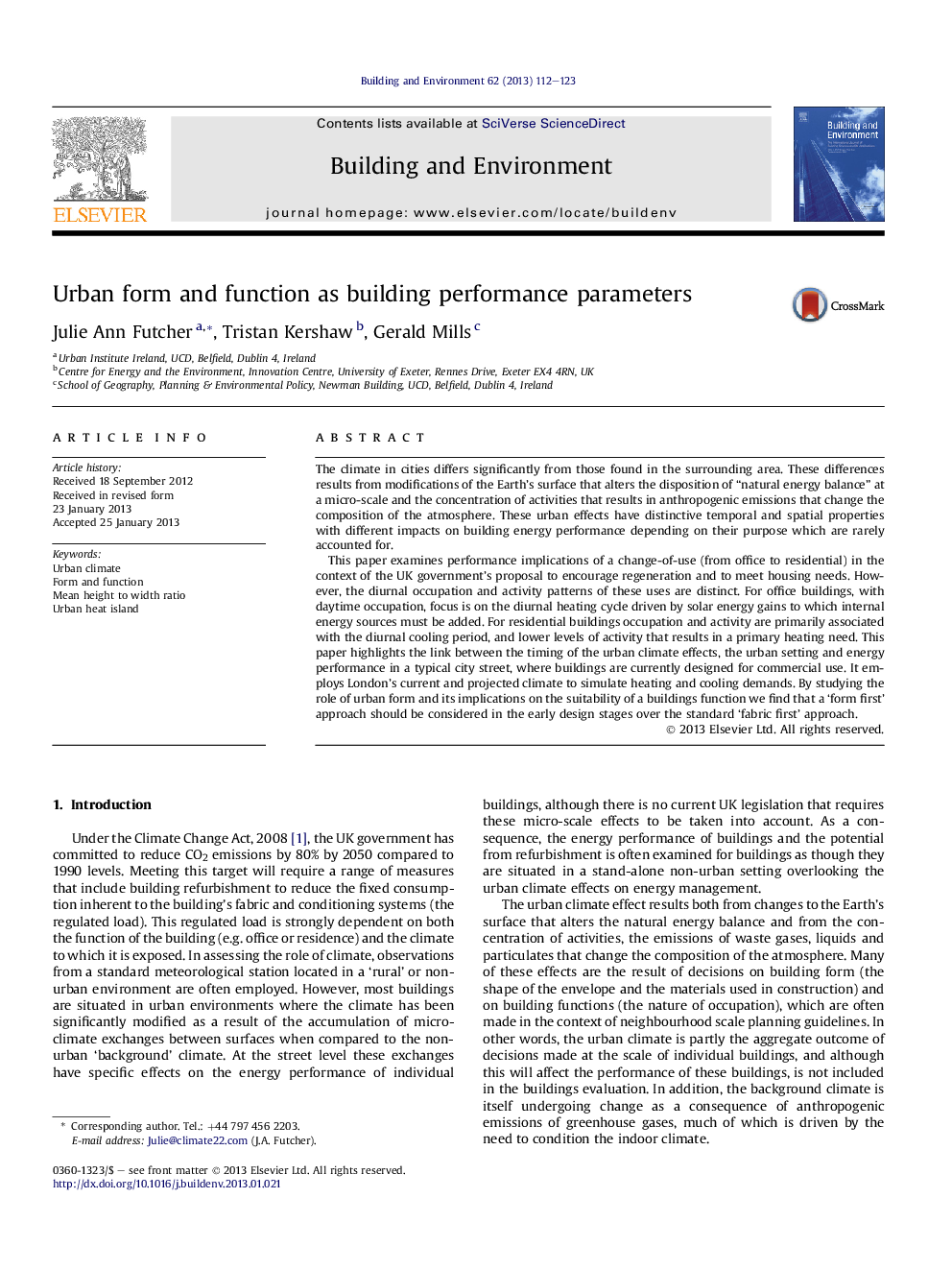| کد مقاله | کد نشریه | سال انتشار | مقاله انگلیسی | نسخه تمام متن |
|---|---|---|---|---|
| 248315 | 502559 | 2013 | 12 صفحه PDF | دانلود رایگان |

The climate in cities differs significantly from those found in the surrounding area. These differences results from modifications of the Earth's surface that alters the disposition of “natural energy balance” at a micro-scale and the concentration of activities that results in anthropogenic emissions that change the composition of the atmosphere. These urban effects have distinctive temporal and spatial properties with different impacts on building energy performance depending on their purpose which are rarely accounted for.This paper examines performance implications of a change-of-use (from office to residential) in the context of the UK government's proposal to encourage regeneration and to meet housing needs. However, the diurnal occupation and activity patterns of these uses are distinct. For office buildings, with daytime occupation, focus is on the diurnal heating cycle driven by solar energy gains to which internal energy sources must be added. For residential buildings occupation and activity are primarily associated with the diurnal cooling period, and lower levels of activity that results in a primary heating need. This paper highlights the link between the timing of the urban climate effects, the urban setting and energy performance in a typical city street, where buildings are currently designed for commercial use. It employs London's current and projected climate to simulate heating and cooling demands. By studying the role of urban form and its implications on the suitability of a buildings function we find that a ‘form first’ approach should be considered in the early design stages over the standard ‘fabric first’ approach.
► The value of the thermal interdependence between modern building groups.
► Urban climate implications when buildings undergo a change of use.
► Building group performance examined in relation to mean H/W ratio.
► Building group performance examined in relation to the nocturnal UHI.
► Street H/W ratio as a common descriptor to link urban disciplines.
Journal: Building and Environment - Volume 62, April 2013, Pages 112–123